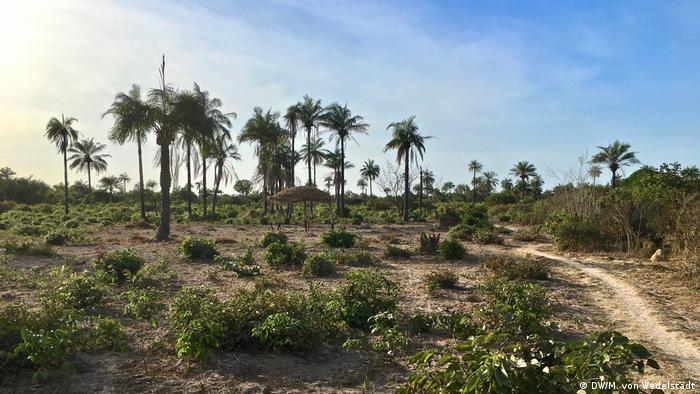As a tourist destination to the West African country is hardly known. Here, miles of sandy beaches and vast mangrove forests lure in addition to the capital, Dakar. Time for a visit.

“The streets here are laid out according to the example of Paris,” explains our guide Babackar. We are in the midst of Senegal’s capital of Dakar in the Place de l’Independance – a strange place, to refer to the French model, where, however, the place celebrates the independence from colonial rule. Strange maybe, because it is here, away from the Parisian Flair. Apart from individual buildings in a colonial style, I find little attractive architecture.
Dakar is a metropolis on the Atlantic ocean

Tradition meets Modernity
The more diverse, however, the inhabitants of Dakar: businessmen in suits, young people in colorful sports clothes, a believer in elegant Caftans. Although Senegal is primarily Muslim, are dressed a lot of women casual, or wearing typical African clothes. Our city tour ends at one of the two Mamelles, one of the “Breasts” of Dakar. From the basalt mountain you can look to the Cap-Vert over the westernmost tip of Africa.
Dakar is surrounded on three sides by the Atlantic ocean. The shows, especially culinary: fish is the most important resource of the country. In the numerous Restaurants of the city, where you can eat for little money, often very good, especially Thiof on the map, the dominant White grouper.

Since 1874, the lighthouse of Dakar signals the westernmost point of Africa
Traces of the colonial period
Due to the Overfishing of the Atlantic, the stocks have declined, however. More and more impoverished fishermen and farmers, and moving to the big city, comes behind with their infrastructure. And so we are on the way back to the Hotel again in the traffic jam. Classic sights you can hardly find in Dakar. But the colorful markets, cafes, Bars and night clubs offer many opportunities to take in the culture of the country.
A contrast to the million city of Dakar offers a trip to the offshore island of Île de Gorée. After 30 minutes of boat ride, we land in a picturesque Idyll: a small island without cars, with Colonial architecture and cobblestone streets. Also impressive is the Museum Maison des Esclaves. It is documented, as here and in other coastal towns of West Africa over centuries, slaves to America were shipped.

Île de Gorée, the port
Beyond Dakar
To learn even more about the country, I’m in the South of Senegal. What is striking is the visible opposites. The first 50 kilometers it goes over a new toll-highway. Along the route, shiny technology to be tamped parks, residential district and a high-speed road from the ground. But appearances can be deceiving, because Senegal is a developing country. What you see here is part of an ambitious economic recovery plan: by 2035, the country wants to achieve the Status of a threshold country. But at the new airport, the motorway ends. From here, the roads are constantly bad and the villages poorer.

The green South – sub-tropical rain forest in the Casamance
I travel as most of the Senegalese in a Sept Place, a seven seater shared taxi is a converted station wagon. This is not always convenient, and the transfer places it is also loud when it comes to Seating or prices for Luggage. I’m glad I met Badara, a professional football player in a suit with a pink rolling suitcase that performs from now on, all negotiations for me.
On The Beach
After we have passed the enclave of the Gambia, I feel like in another country. The Casamance region is covered with subtropical rain forest, is far less developed than the North of the country and has more a much more original African character. In the green Delta of the Casamance river, I’m on a paddle tour through the seemingly endless mangrove forests and stay in a mud hut on a remote island in the river Delta.

Enough space for everyone – the beach of Cap Skirring
Tourist Highlight of the Region, the Cap Skirring on the Atlantic coast, to sprawling white beaches with palm trees, small Bars and Restaurants that obtain their fish directly from the boat. The boundaries between the beach, farm and business are fluent, and so I share the beach with cows and hawkers, who try to bring arts and crafts, fresh fruit and groundnuts – the main export product of Senegal at the man. While some of the French tourists involved in the sale talks, I enjoy a few hundred metres the rest away on the Atlantic ocean.

